Clay Soil Veggie Gardening Success in Russell This Spring
Quick Guide to Russell Clay Gardening:
- Understand clay holds nutrients but drains poorly.
- Amend heavily with organic matter (compost, manure) when soil is workable (not wet).
- Choose clay-tolerant plants (beans, broccoli, kale, squash).
- Use raised beds for easier gardening and perfect drainage.
- Mulch generously (2-3 inches) to conserve water and suppress weeds.
- Water deeply but infrequently, checking soil moisture first.
Ready to transform your Russell garden? Don’t let clay soil stop you! If you need expert help getting started, request a free estimate today.
Introduction: Don’t Let Clay Soil Crush Your Veggie Dreams in Russell!
Ah, Russell! Beautiful place, right? But let’s talk dirt. Specifically, that heavy clay soil common across the Ottawa region that can feel like trying to plant carrots in leftover sidewalk mix after a downpour. If you’ve ever sighed watching water pool around your plants or felt your shovel *thwack* against rock-hard summer clay, you know the unique gardening challenges we face here and in nearby areas like Embrun or Metcalfe. It’s enough to make anyone think twice about starting a vegetable patch!
But here’s the good news: don’t hang up your trowel just yet! Growing fantastic veggies in Russell’s clay *is* achievable. It just takes a little know-how and the right attitude. This spring, let’s focus on smart soil amendment techniques, simple ways to improve drainage, and perhaps even exploring options like raised garden beds. With the right approach and some clever landscaping tweaks, you can absolutely transform that tricky clay into a thriving vegetable haven right in your own backyard. Get ready for a bountiful harvest! Find inspiration on our Google My Business page!
Getting Friendly with Your Clay: Understanding Russell’s (and Ottawa’s) Soil
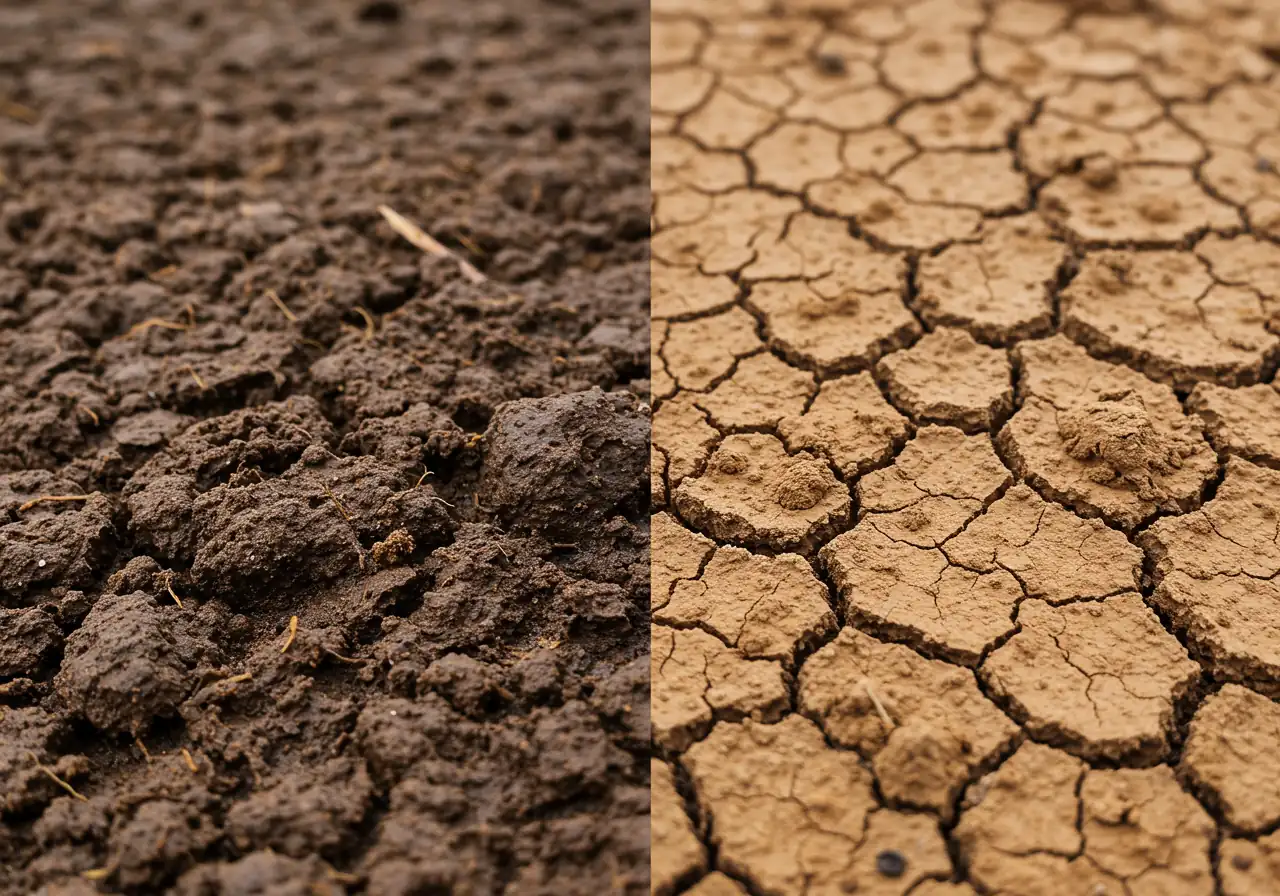
Alright, let’s dig into the dirt – literally! That heavy soil underfoot in Russell and much of the Ottawa area is often Leda clay. Think of it like nature’s Play-Doh: sticky and dense when wet, surprisingly hard when dry. Its particles are super tiny and packed tightly together. This gives clay soil some unique personality traits, both good and, well, challenging for us veggie gardeners.
On the plus side, clay soil is a nutrient powerhouse. It holds onto essential minerals like a champ, meaning your plants have a steady food source available. It also retains water, which can be helpful during those dry spells we sometimes get in Eastern Ontario summers (Check out Ontario’s soil management resources for broader context).
However, that water retention can be a double-edged sword. Poor drainage is clay’s biggest hurdle. Water sits instead of soaking in, leading to soggy roots (a recipe for rot!) and making the soil tough to work, especially after a spring thaw or heavy rain. When it *does* dry out, it can bake into something resembling concrete, making digging a real workout and stressing plant roots. Compaction is another issue; those tiny particles get squished together easily, squeezing out air pockets vital for healthy root growth. This is similar to why homeowners see – breaking up compaction helps everything breathe! Dealing with water runoff? You might find inspiration in exploring .
Don’t despair though! Understanding this “personality” is key. Knowing your soil’s tendencies helps you make smarter choices. While some veggies struggle, others can adapt, especially with soil improvements. In fact, it’s possible you can work *with* the clay for certain projects, like which often feature hardy native plants.
It’s also worth remembering that soil isn’t perfectly uniform. Your backyard might differ slightly from your neighbour’s, or from soil in nearby areas like Greely or Metcalfe (learn about regional soil types from Agriculture Canada’s soil survey data). Getting a simple soil test can tell you specifics about your pH and nutrient levels. Tackling tricky soil might even inspire some bigger picture thinking, like incorporating raised beds or containers, similar to the that work around site challenges. If amending and managing clay feels overwhelming, remember our comprehensive landscaping services are always available to help turn that challenging clay into productive garden soil. Our Customer Portal makes managing services easy.
Whip Your Clay into Shape: Spring Soil Prep Secrets
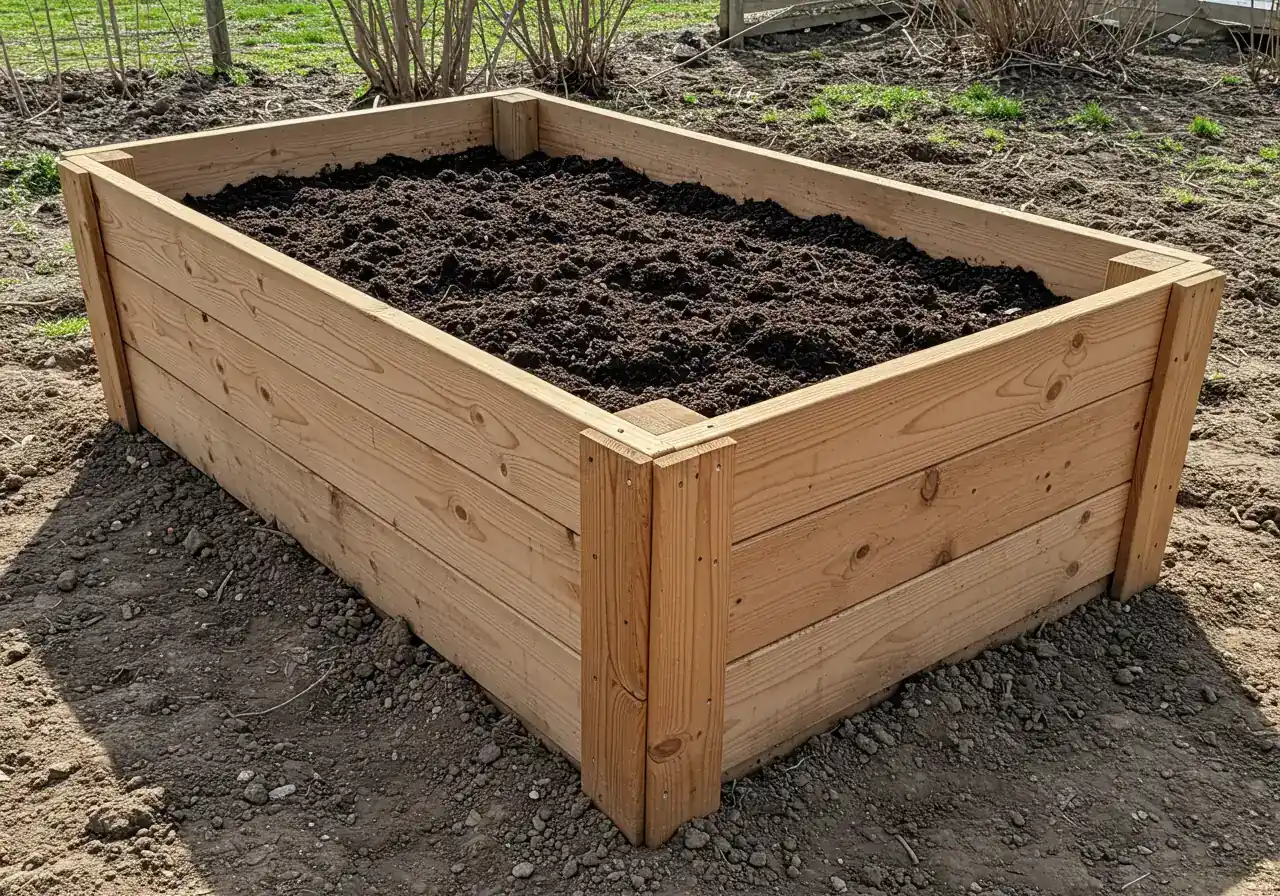
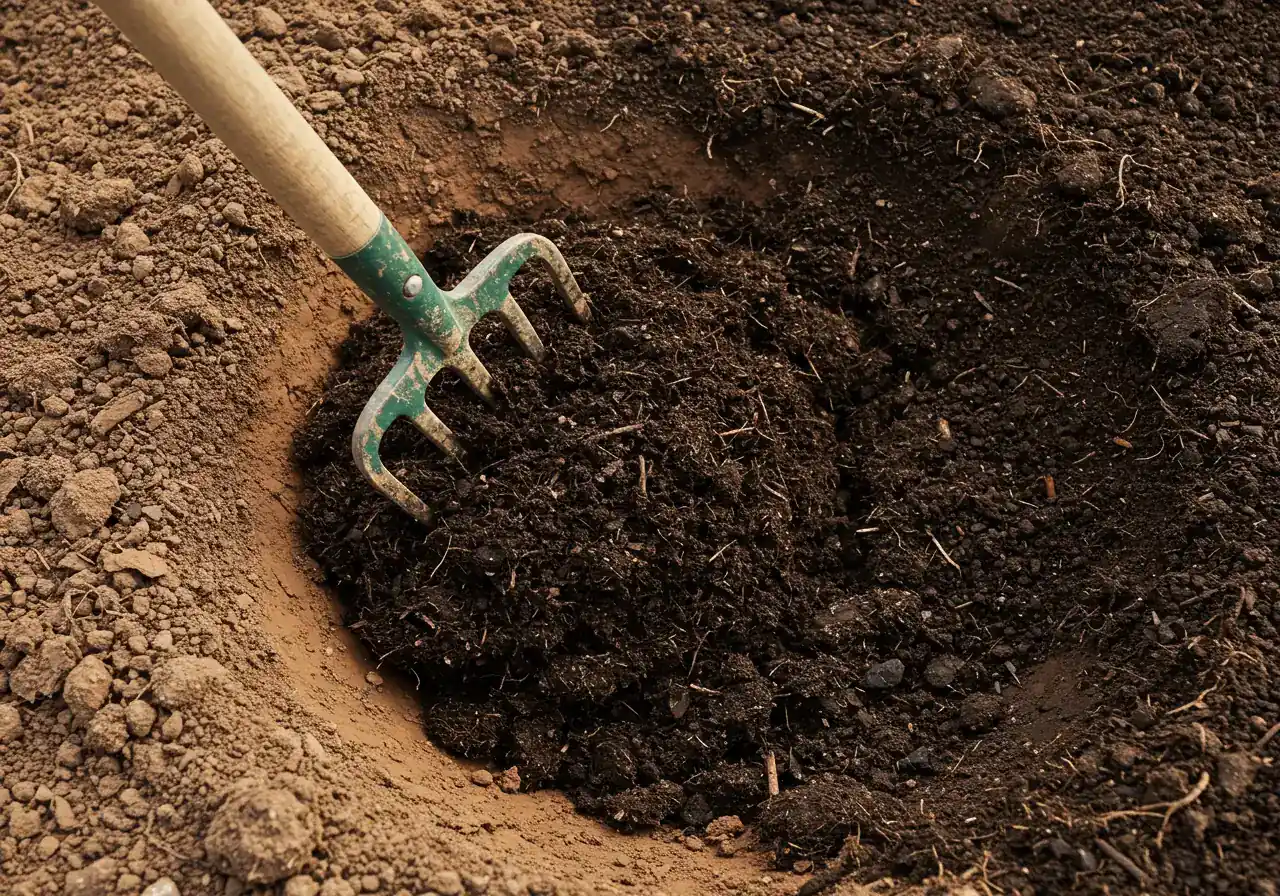
Alright, garden warriors of Russell and beyond, let’s talk spring! That beautiful time when the snow finally melts, revealing… well, often a soggy patch of stubborn clay soil. Trying to dig into wet clay is like wrestling a particularly grumpy hippo – messy and unproductive. Wait too long, and it bakes harder than last week’s forgotten baguette. The trick to whipping your Ottawa-area clay into shape for planting glorious veggies lies in timing and *lots* of the good stuff: organic matter.
Finding that “just right” moment in spring is key. You want the soil to be moist enough to crumble easily in your hand, but not so wet that it clumps into a sticky ball or leaves your boots caked in mud. This Goldilocks window can be short here, sometimes just a few days between soggy and solid, especially in areas like Barrhaven known for heavy clay. Patience, young Padawan! Working wet clay compacts it further, undoing all your good intentions.
So, what’s the secret weapon against dense clay? Organic matter! Think of compost, well-rotted manure (aged for at least six months, please – fresh stuff can burn plants!), shredded leaves saved from last fall, or even peat moss (though compost is generally more sustainable). Adding generous amounts of this goodness does wonders:
- It physically separates the tiny clay particles, creating larger pathways for air and water. Buh-bye, poor drainage!
- It improves soil structure, making it lighter and easier for roots to penetrate.
- It adds essential nutrients and encourages beneficial soil life like earthworms (nature’s little rototillers!). Get composting tips from the City of Ottawa’s composting guide.
Getting Down to Dirt (The In-Ground Method):
Once your soil is workable (crumbly, not sticky), spread a good 3 to 6 inches of your chosen organic matter right on top of the garden bed. Now, gently work it into the top 6 to 12 inches of soil. Avoid pulverizing the soil with excessive tilling; you want to incorporate, not obliterate. A digging fork is often better than a rototiller for initially breaking things up without destroying structure. Yes, it’s a workout! If the thought makes your back ache, remember that many hands make light work – or you can explore options like our comprehensive landscaping services to handle the heavy lifting. Getting the beds cleared and ready is also step one, something our Ottawa garden clean up service team handles regularly.
Taking the High Ground (Raised Beds):
Feeling overwhelmed by your existing soil? Raised beds are a fantastic solution! They let you bypass the heavy clay issue almost entirely by creating a contained area you can fill with a perfect soil mix from the start. You can build simple wooden frames or buy kits. This approach gives you complete control over drainage and soil composition, making them ideal for many garden install projects. As our Manotick yard cleanup service experts know, preparing the *area* for raised beds is just as important as filling them. Understanding the unique challenges of local soils is part of why we operate here; our About Us page explains our local focus and commitment to the Ottawa region. See our Privacy Policy regarding data handling.
Whichever path you choose, amending that clay soil *before* you plant is the single best thing you can do this spring for a successful vegetable garden. Your future bountiful harvest will thank you!
Veggies That Laugh at Clay: Choosing Your Spring Champions
Okay, so you’ve wrestled with your clay soil, maybe even followed some great tips for Soil Preparation, and now it’s time for the fun part: choosing your veggie lineup! Planting in Ottawa’s clay isn’t about forcing delicate flowers into tough spots; it’s about picking the right players for the team – the veggies that practically chuckle at dense soil. Think of these as your garden’s superheroes, ready to thrive where others might pout, even in challenging spots from Barrhaven to Vernon.
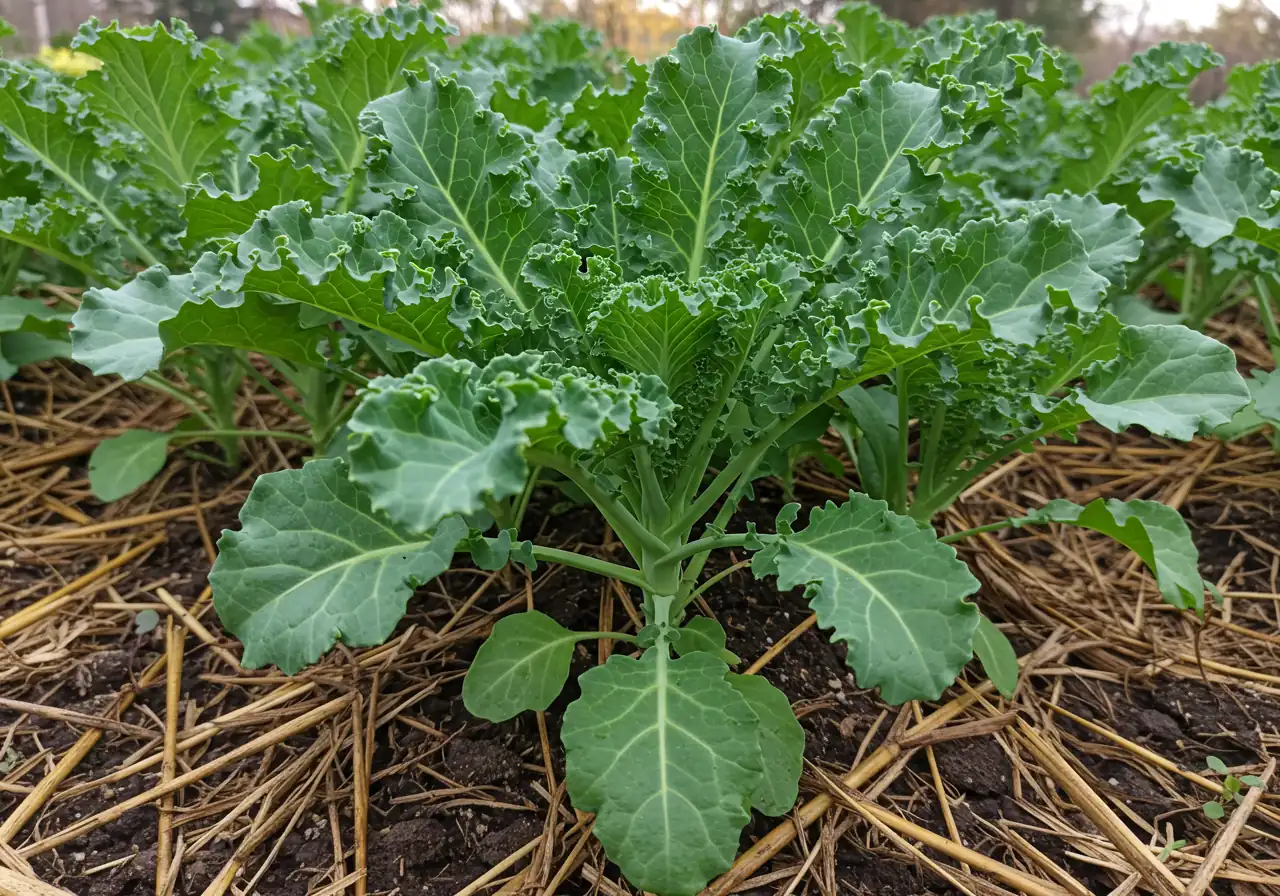
Your Clay Champion All-Stars:
These leafy greens and robust roots tend to handle heavier soil better, especially if you’ve given it some love with compost. They are your best bet for a successful spring planting season in clay.
- Leafy Greens: Lettuce (especially loose-leaf varieties), Swiss Chard, Kale. Their relatively shallow roots don’t mind the density as much.
- Brassicas: Broccoli, Brussels Sprouts, Cabbage, Cauliflower. These members of the cabbage family are surprisingly tough and productive in clay.
- Beans & Peas: Bush beans and pole beans, along with most peas, generally do well. Their nitrogen-fixing ability is a fantastic bonus for improving soil over time!
- Hearty Roots (with help): Potatoes can actually help break up compacted soil as they grow! Beets and Turnips can also manage if the soil isn’t constantly *waterlogged*.
- Squash & Pumpkins: Given enough space and surface compost, summer and winter squash often thrive, sprawling over the challenging soil rather than needing perfectly deep, loose conditions initially.
The Slightly Sulkier Squad (Clay Challengers):
These veggies often find clay soil a bit, well, *challenging*. They prefer lighter, looser, perfectly drained conditions. While not impossible, expect a tougher fight with these unless you’ve heavily amended the soil or are using raised beds.
- Delicate Root Crops: Carrots (especially long, slender types often get stunted or deformed), Parsnips, Radishes (can bolt or become woody if stressed by dense, wet soil).
- Heat Lovers with Finicky Roots: Peppers, Eggplant, Tomatoes often prefer warmer, better-draining soil. They *can* succeed with significant soil amendment, but clay makes it harder.
- Onions & Garlic: While they can grow, consistent moisture *without* waterlogging is crucial, which clay makes tricky. They strongly dislike sitting in soggy soil (‘wet feet’).
Clay Combat Comparison:
| Clay Champions (Generally Tolerant) | Clay Challengers (Often Struggle) |
|---|---|
| Lettuce, Kale, Chard | Carrots, Parsnips |
| Broccoli, Cabbage, Cauliflower | Peppers, Eggplant |
| Beans, Peas | Radishes |
| Potatoes, Beets | Onions, Garlic |
| Squash, Pumpkins | Tomatoes (can be tricky) |
Bonus Tip: Some deep-rooted plants, like daikon radish (sometimes used as a cover crop), have powerful taproots that can act like natural drills, helping to improve soil structure over time by penetrating dense clay. Choosing the right plants is key!
Remember too, that even within Ottawa, microclimates exist. A sheltered backyard in a denser neighbourhood might warm up faster than an exposed garden plot in a more rural area like Vernon. Observe your specific spot! Need some visual motivation for what’s possible? Take a peek at our Gallery to see beautiful, thriving Ottawa gardens.
If choosing plants feels like another task on top of getting the ground ready, remember our Ottawa garden clean up service can give you a perfectly clean slate to start from. Deciding on plants and potential professional help involves planning; it’s always smart to understand agreements beforehand, so feel free to review our service approach detailed in our Terms and Conditions online. Feeling ready to discuss your specific veggie patch challenges and get personalized advice? Book an Estimate with us, and let’s choose your spring champions together!
Planting Power & Early Care in Your Clay Patch
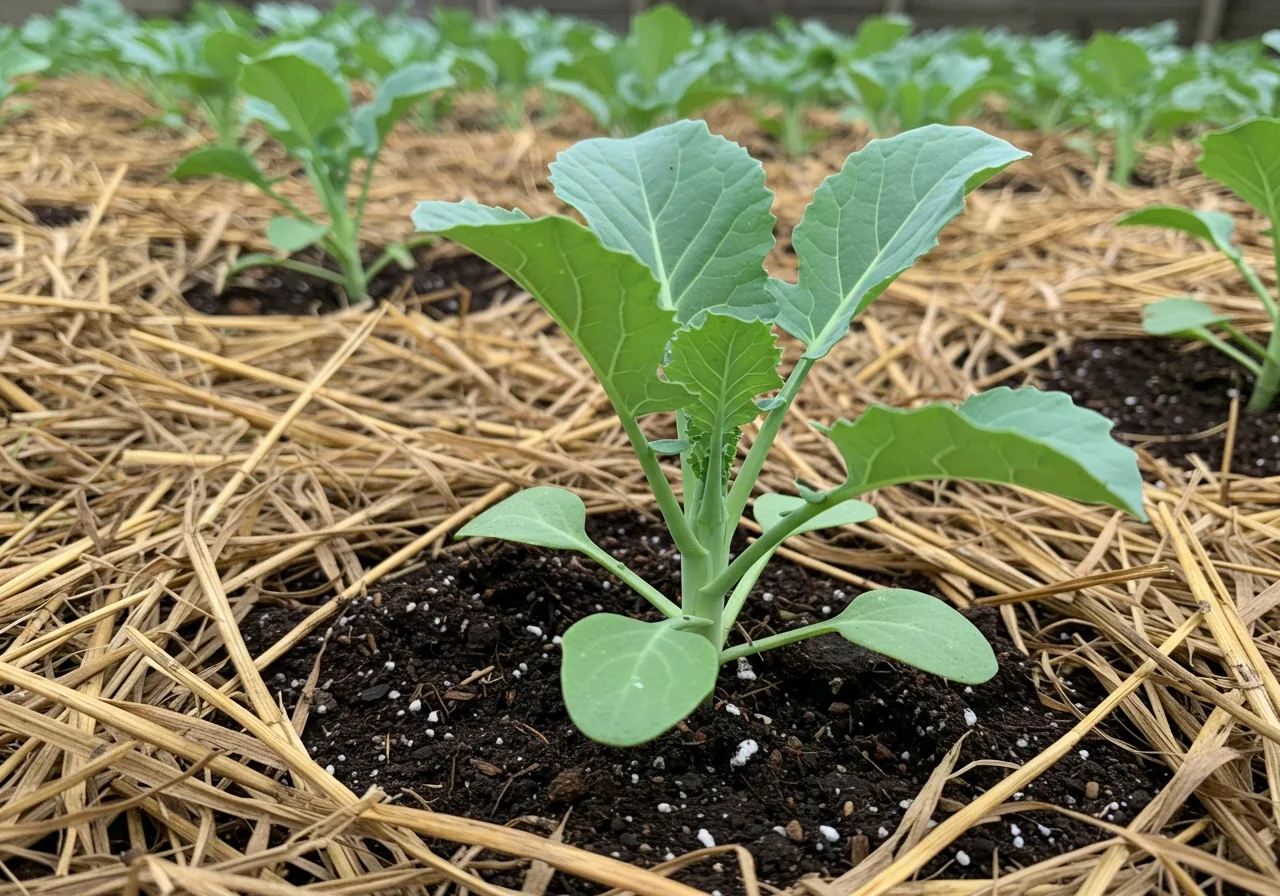
Okay, you’ve amended your Russell soil, chosen your veggie champions – now it’s planting time! Sticking plants into improved clay isn’t rocket science, but a few tweaks can make a big difference, especially with the sometimes-wild Ottawa spring weather we experience from Nepean to Richmond. Think of it as giving your green babies the best possible start in their slightly challenging, but totally workable, home.
Planting Your Veggies (The Clay-Friendly Way):
- Dig Smart: Excavate a hole that’s slightly wider, but generally no deeper, than the plant’s root ball or container. You want the plant sitting at the same level it was in its pot. Digging too deep into unamended clay below can create a ‘bathtub’ effect where water collects.
- Loosen Up (Gently!): If your seedling is root-bound (roots circling tightly), gently tease the bottom roots apart. Don’t go crazy; just encourage them to spread outwards into their new home.
- Position and Backfill: Place your plant in the hole. Backfill around it using the lovely amended soil you prepared. Don’t pack it down hard! Lightly firm the soil to remove major air pockets, but avoid compacting your hard-won improved structure.
- Water Wisely (First Sip): Give your newly planted veggie a good, gentle drink right at the base. This helps settle the soil around the roots.
Watering Wisdom for Clay:
Clay soil holds moisture like a sponge that forgot how to let go. This means *overwatering* is often a bigger risk than underwatering, especially in spring.
- Check First: Before watering, stick your finger about an inch or two into the soil near the plant base. If it feels moist, hold off. If it feels dry, it’s time for a drink.
- Deep & Infrequent: Aim for longer, deeper watering sessions less frequently, rather than little daily sprinkles. This encourages roots to grow downwards in search of moisture, making them more resilient. Learn more about efficient watering from resources like the Gardening Know How vegetable watering guide.
- Avoid Soggy Feet: Ensure water isn’t constantly pooling. If heavy Ottawa spring rains are forecasted, make sure your drainage pathways are clear. Keeping the area around your beds tidy helps prevent blockages – it’s a principle our Marionville property cleanup service team knows well when preparing yards. For larger drainage issues, you might need professional lawn care and landscape adjustments.
Mulch: Your Garden’s Best Friend
Seriously, don’t skip this step! Applying a 2-3 inch layer of organic mulch (like shredded leaves, straw, or compost) around your plants *after* watering is crucial for clay soil success.
- Moisture Magic: Mulch acts like a lid, dramatically slowing water evaporation from the soil surface. Less watering for you!
- Weed Warrior: It smothers weed seeds, preventing them from competing with your precious veggies for nutrients and water.
- Temperature Tamer: Mulch helps insulate the soil, keeping roots cooler during hot spells and warmer during those surprise cool snaps we sometimes get.
- Bonus: As organic mulch breaks down, it continues to feed and improve your soil structure. Need ideas on what to use? Check out our advice on smart material selection for your Ottawa garden. Professional mulching and edging can give a polished look.
Early Season Vigilance:
Keep an eye on your young plants. Ottawa springs can throw curveballs. Watch for signs of stress like yellowing leaves (could be too much water) or wilting (could be too little water, or sometimes transplant shock). Protect tender seedlings from late frosts if needed. A clean garden area is less inviting to pests and diseases; it’s similar to how homeowners using the Metcalf property cleanup service find fewer issues arise when debris is managed. Maintaining overall tidiness, like the work done by our Marionville yard cleanup service professionals, contributes positively to garden health. Our sod installation services also benefit from proper soil prep.
Feeling a bit overwhelmed by the planting process or the ongoing care? If you need a hand getting everything settled in or expert advice tailored to your specific patch, don’t hesitate to book an estimate with our gardening team. We’re here to help your clay patch thrive!
Focus on Soil Preparation
The most critical step for clay soil is amendment. Remember:
- Work soil ONLY when it’s crumbly, not wet or bone dry.
- Add 3-6 inches of compost or well-rotted manure.
- Gently incorporate into the top 6-12 inches. Avoid over-tilling.
- Consider raised beds to bypass heavy clay entirely.
- Need help with the heavy lifting? Explore our Property Clean Up services.
Key Planting Techniques
Give your plants the best start:
- Dig holes slightly wider, not much deeper than the root ball.
- Gently loosen bound roots.
- Plant at the same depth as the container.
- Backfill with amended soil, firm gently.
- Water immediately after planting.
- See our Garden Install page for inspiration.
Essential Early Care
Keep your young plants happy:
- Water deeply but less frequently – check soil moisture first!
- Apply 2-3 inches of organic mulch after planting.
- Weed regularly to reduce competition.
- Monitor for pests and signs of stress (yellowing/wilting).
- Protect from late frosts if necessary. Our Garden Maintenance service can help.
Your Russell Clay Garden Calendar: Spring into Summer Success
Let’s map out your veggie gardening game plan for Russell’s unique clay soil! It can feel a bit different than gardening elsewhere, right? Remember, Mother Nature doesn’t always stick to *our* schedule – thanks, Ottawa weather! – so treat this as a flexible guide. Conditions in nearby Embrun or Winchester might shift things slightly, but the general flow from spring prep to summer care remains similar across the region.
April: The Waiting Game & Early Prep
Patience is key! Avoid digging wet clay. Start heat-lovers (tomatoes, peppers) indoors. Once workable, do spring cleanup (raking). If dry enough, begin adding compost gently. An Ottawa property cleanup service can tackle big messes.
May: Planting Power Month!
Watch Frost Dates: Usually safe after Victoria Day long weekend. Harden off seedlings. Direct sow hardier seeds (beans, peas, lettuce). Apply 2-3 inches of mulch after planting. Consider professional Mulching and Edging for a neat finish. See garden Transformations for ideas!
June: Watering, Weeding & Watching
Plant out hardened-off tomatoes, peppers, squash. Water Wisely: Check soil moisture first; water deeply, less often. Weed diligently. Start pest patrol. Provide Estimate Feedback if you notice specific issues after our services.
July: Summer Care & Early Bites
Continue deep watering, especially in heat. Monitor pests/diseases. Succession sow quick crops (lettuce, spinach). Enjoy early harvests! Consistent tidiness, like that provided by our Marionville yard cleanup service, helps prevent problems.
Impact of Amendments on Clay Soil (Illustrative)
Note: Chart shows relative improvement potential. Actual results vary.
Clay Soil Quick Wins!
Gardening in heavy Ottawa clay? Don’t let it be a pain in the patch! Try these quick wins:
- Boost Your Dirt: Mix lots of compost or well-rotted manure into *workable* (not wet and sticky!) clay. This is your #1 move for improving drainage and making roots happier.
- Plant Clay-Friendly Champs: Choose tougher veggies like beans, broccoli, kale, squash, or potatoes that tolerate heavier soil. Save the delicate divas for raised beds or super-amended spots.
- Mulch Like You Mean It: Apply a 2-3 inch layer of organic mulch (shredded leaves, straw) after planting. It saves water, stops weeds, and slowly improves the soil structure below. A tidy surrounding area, like those maintained by our Metcalf yard cleanup service, ensures your mulch isn’t competing with debris.
- Water Wisely, Not Wildly: Clay holds water! Stick your finger in the soil first. If it’s damp an inch down, wait. Water deeply but less often to encourage strong roots. Good overall drainage, sometimes improved after a thorough property clean up, prevents waterlogging.
- Consider Going Up: Raised garden beds totally bypass digging in stubborn clay! Fill them with ideal soil mix for guaranteed great drainage and easier gardening, leading to impressive Transformations. Getting the site ready, a common task for our Marionville garden clean up service, is the first step to raised bed success. Our Metcalf garden clean up service can also help prepare your space.
FAQs: Your Burning Ottawa Clay Garden Questions Answered
Not necessarily *bad*, just… particular! Think of Ottawa clay like a grumpy but talented relative. It holds nutrients really well, which is great for plants. The big challenge is its density, leading to poor drainage and compaction, especially after our wet springs or heavy summer rains. Roots need air and space! With some smart soil prep (adding organic matter is key!) and choosing the right plants, you can definitely have a fantastic garden in places like Manotick or anywhere in the region. It just requires a bit more understanding than lighter soils might. Good garden maintenance makes a difference.
Patience is your best friend here in Ottawa! The *perfect* time is when the soil is moist enough to crumble easily in your hand, but *not* sticky or muddy. If you squeeze a handful and it forms a dense, wet ball, wait! Working wet clay causes compaction, undoing your hard work. That ideal window between soggy and rock-hard can be short after snowmelt, whether you’re in Kenmore or closer to the city. Gentle digging when it’s ‘just right’ makes all the difference.
Oh, we hear you – Greely clay can be tough, much like in neighbouring Osgoode! Honestly, the *easiest* way to bypass heavy digging is with raised garden beds. You build a frame and fill it with a perfect, loose soil mix from the start. No wrestling with stubborn clay required! It guarantees great drainage and root-friendly conditions. Container gardening is another great option for smaller spaces. If you’re unsure about setting up raised beds or need advice specific to your yard, feel free to contact us for personalized landscaping solutions.
Aim for a generous layer! For improving existing clay beds, spread about 3 to 6 inches (that’s 7-15 cm) of good quality compost or well-rotted manure over the surface *before* gently mixing it into the top 6-12 inches (15-30 cm) of soil. Don’t skimp! Clay needs a *lot* of organic matter to significantly improve its structure and drainage, whether you’re gardening in Winchester or Metcalfe. Doing this annually really helps. Getting the beds prepped and ready can be part of an Ottawa yard cleanup service.
Mixing it in is generally much better! Just layering good soil on top can create drainage problems – water might hit the dense clay underneath and pool, essentially creating a soggy bottom layer for your plant roots, a common issue in heavy Ottawa soils. *Gently* incorporating compost and amendments *into* the existing clay helps transition the layers and improves structure deeper down. For a no-dig approach, look into ‘lasagna gardening’ which layers organic materials over time. Mixing ensures better long-term results, and your plants will definitely be sending you a mental thank-you note for it!
Conclusion: Reap the Rewards of Your Russell Clay Garden!
So there you have it, fellow Russell green thumbs! Gardening in our infamous Ottawa-area clay, whether you’re right here or over in nearby Greely, doesn’t have to be a mud-wrestling match. Think of it more like making friends with a slightly stubborn, but ultimately rewarding, patch of earth. By focusing on the key steps – boosting your soil structure with *loads* of organic matter, picking plant champions that are up for the challenge (hello, hardy beans and robust squash!), watering thoughtfully, and embracing the wonders of mulch – you’re well on your way to a thriving vegetable plot.
Yes, clay requires a bit more understanding and perhaps some extra muscle during spring prep compared to lighter soils. But the payoff? Oh, it’s fantastic! Imagine harvesting crisp lettuce, juicy tomatoes (from those well-amended beds!), and crunchy beans, all grown with your own hands despite the tricky starting point. Success *is* achievable, and the taste of those home-grown veggies is the ultimate reward.
Feeling inspired but maybe need a hand with the heavy lifting or planning your perfect veggie patch layout? Our expert *landscaping* and *gardening* team knows Ottawa clay like the back of our trowels – check out our services to see how we can help! We’d love to hear about your own clay garden victories or challenges – what works best in your *Russell* garden?
Ready to Grow?
Let Clean Yards help you achieve your best garden yet, even in clay soil.
Request Your Free EstimateContact Us With Questions

